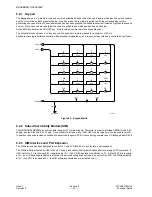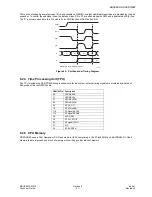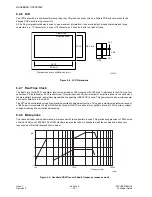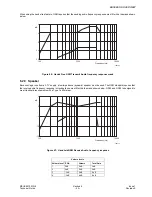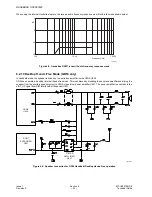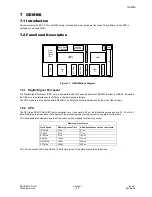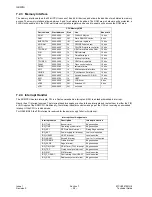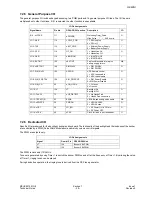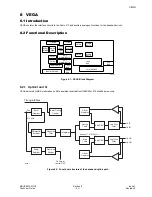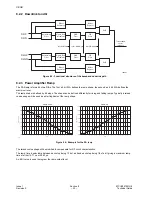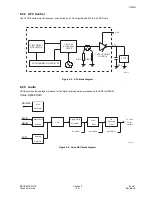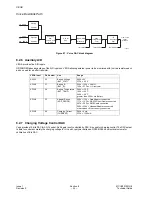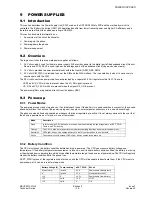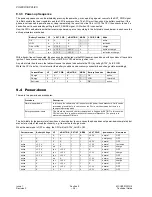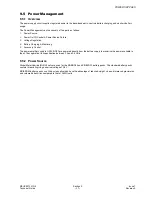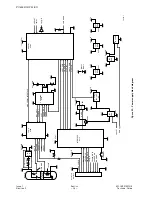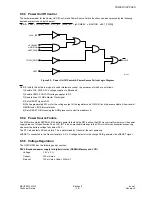
VEGA
Issue 1
Section 8
MCUK991001G8
Revision 0
– 34 –
Technical Guide
Voice Downlink Path
Figure 8.7: Voice DAC block diagram
8.2.6 Auxiliary A/D
VEGA provides five A/D inputs.
GD30/GD50 takes advantage of the A/D inputs on VEGA allowing external power to be monitored with just two resistors each
and no need for a buffer transistor.
8.2.7 Charging Voltage Control DAC
Vega provides 10 bits DAC for AGC control. As Rx gain is not controlled by DAC, it is used for charging control. The DAC output
is able to control accurately the charging voltage for Li+ and Li-polymer batteries. GD30/GD50 has electrical volume for
calibration of this DAC.
VEGA input
Pin Number
Use
Range
ADIN1
36
Battery Voltage
(BAT_VOLT)
000h = 0V
3FFh = 5.5 V
ADIN2
37
Battery ID
(BAT_ID)
000h ~ 135h = Ni-MH
136h ~ 3FFh = Li, Li-polymer
ADIN3
38
Battery Temperature
(BAT_TEMP)
084h = +70°C
199h = +25°C
346h = -20°C
greater than 3F0h = No Battery
ADIN4
39
Adaptor Sense
(ADP_SENSE)
000h ~ 176h = Data Adaptor connected
177h ~ 1CFh = RS232 Direct Cable connected
20Fh ~ 293h = SMS Cable connected
299h ~ 334h = Headset Adaptor connected
other values = No accessory connected
ADIN5
40
Charging Current
(CURRENT)
000h = 0 mA
3FFh = 1200 mA
Amplifier
Auxiliary
Amplifier
IIR
Bandpass
Filter
serial
interface
fs2=40KHz
fs3=8.0KHz
fs1=1MHz
Earphone
Smoothing
Filter
Volume Cont
& PGA
One bit
DAC
Sigma_Delta
Modulator
SINC
Filter
Interpolation
From voice
AUXO
EARP
EARN
10094-1

